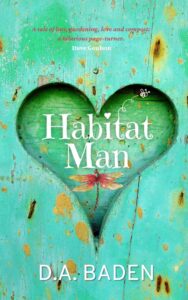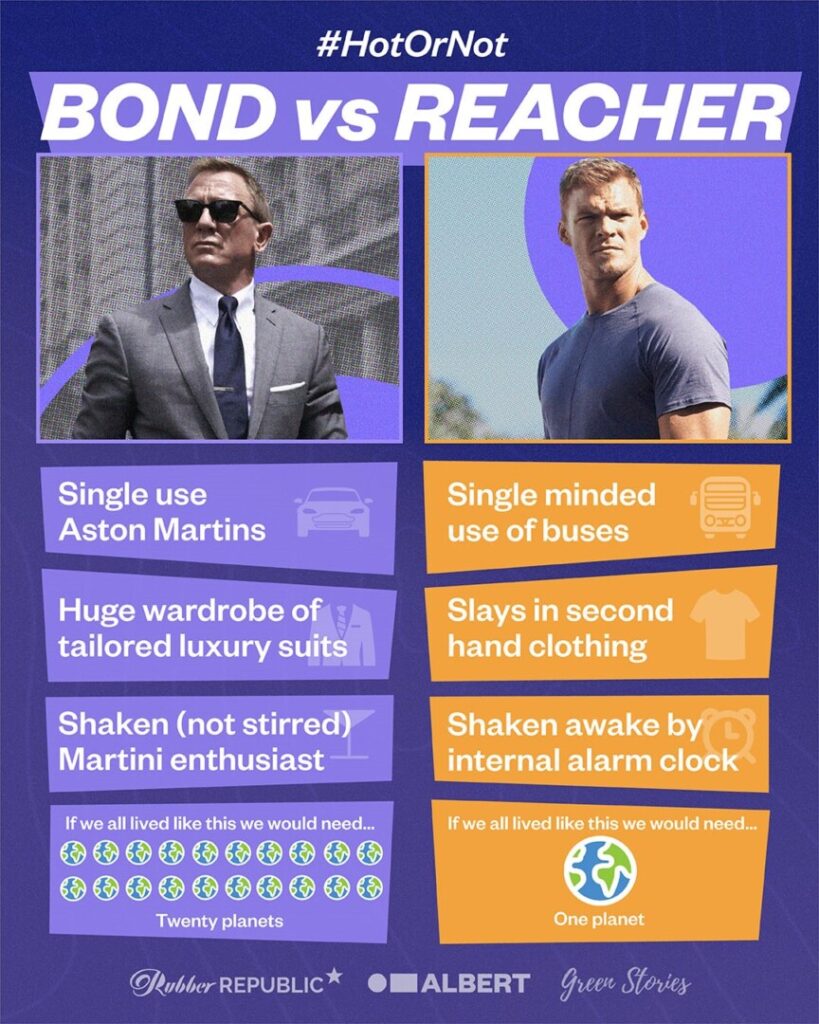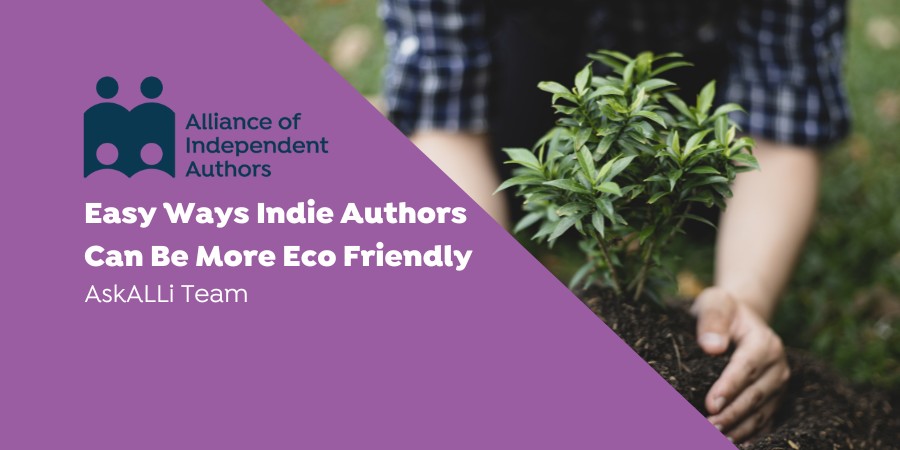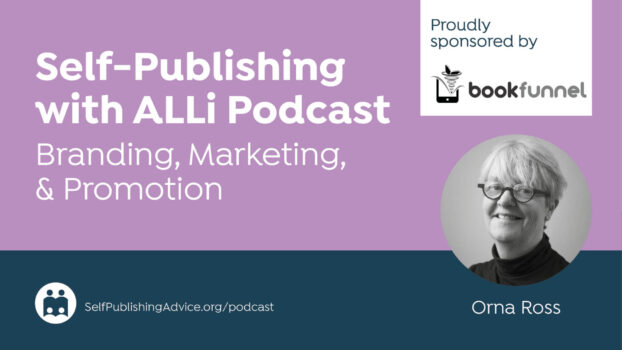Indie authors are always looking to be more inclusive, progressive, and mindful. But we're also part of the publishing industry whose paper consumption has brought into question its eco-friendliness. In this post, the Alliance of Independent Authors‘ explores how indie authors can be more eco-friendly in their author business.
Introduction
When you look at the statistics on climate change, it's alarming. Many of us, unfortunately, don't realise just how serious the issue is. In today's world, eco-friendliness isn't just a concept. It needs to be a crucial practice. Climate change affects all aspects of life and is gaining increasing attention in the realm of publishing, especially with our interest in AI and NFTs.
The publishing industry is traditionally known for its high consumption of paper. Despite that, it is often overlooked in environmental conversations. However as awareness grows, so too does the role that every individual can play, including indie authors. Indie authors have control over their entire creative and publishing process. We have unique opportunities to bring sustainability into the world of books and literature.
The Current Landscape
The publishing industry's reliance on paper has long been tied to environmental concerns. The process of making paper from trees contributes to deforestation, uses large amounts of water, and emits CO2. In fact, one article claims that in the US alone, the publishing industry uses 32 million trees a year for publishing. It is the third largest polluter under pulp and paper sourcing. But that's just the US. Isonomia says:
“We estimate that meeting the demand for the 190 million books sold in the UK in 2018 required around 1.9 million trees: a considerable amount of pulp-based fiction, equivalent to almost a year’s worth of the last Government’s target of planting 11 million new trees in the UK over five years.”
And this is just two countries, the global impact is enormous.
Plus the distribution of physical books requires fossil fuels for transportation, adding to the overall carbon footprint. Of course, after the advent of the Kindle there has been some progress towards reducing emissions. But there are other issues around digital devices such as server capacity – anything with an AI element is data-intensive; streaming services likewise.
Wordsrated continues to claim that “the lifecycle of a Kindle device produces around 168 kg of CO2. But by way of comparison, purchasing three paper books a month for four years produces around 1,074 kg of CO2 in comparison.”
But at what cost are we using e-readers? E-readers don’t require paper and pulp. But Popsci discusses the fact that they do contain plastic, copper, lithium and cobalt—non-renewable metals and minerals obtained from mining. Producing an e-reader requires energy and water. An e-reader requires 33 pounds of minerals in its manufacturing process alone. Plus, we need to charge our e-readers. Reports suggest that an e-reader consumes 194 megajoules of energy in its 10 year long lifetime. “For context, a petrol car uses about 142 megajoules per 100 kilometers.”
Indie authors, however, have an advantage over traditional publishing. They have the ability to control the entire process, from writing to publishing and marketing. This control presents indie authors with opportunities to rethink and reshape the journey of a book from the writer's mind to the reader's hands in more eco-friendly ways. While the traditional publishing sector is beginning to adapt to more sustainable practices, indie authors have the potential to be trailblazers. We can show the industry at large that it's possible to write, publish, and profit while respecting the environment.

ALLi News Editor, Dan Holloway
The Impact of Digital Products
ALLi news editor Dan Holloway regularly reports on the impact of digital products in our regular news feature, so the AskALLi team asked for his thoughts.
It's not just paper printing that has a carbon footprint. But it can be really hard to assess the impact of digital products. Some of the harm digital reading causes comes from the nature of the hardware used (and may go beyond the carbon footprint of the production process to other kinds of water table pollution or land stripping or human exploitation), for example, over which we have no control.
We have all heard stories about the high carbon cost of Bitcoin, and other blockchain technologies such as NFTs. This comes from the way the blockchain uses massive computing power. But not all blockchains work in the same way, and increasingly you will see claims for carbon neutral or low carbon blockchains. And as consumers, navigating those claims can be a nightmare.
Blockchain is not the only energy intensive element of digital culture, though. Streaming as opposed to downloading digital files requires vast processing power. Video and audio files require much more to stream than text, though that of course raises questions about audiobook streaming. And then of course there is AI. As you might imagine, training AI on massive datasets uses an equally massive amount of energy. A recent MIT study suggested, among other very large figures, that training a single AI model produced asmuch carbon as 5 times the lifetime emissions of an average American car,
All of this illustrates several points. Getting your culture digitally is not a simple win for carbon emissions. But working out the exact cost is incredibly tricky, and often depends on factors over which we have no control – and furthermore, factors we may not be able to assess. All of which points as so often to the need for more, and clearer, information.
Denise Baden on How Indie Authors Can Be More Eco-Friendly

Author Denise Baden
Climate change is something we’re increasingly worried about. Every industry now is working on how they can transition towards net zero – in other words, achieve results with minimum environmental impact. As a professor of sustainability at the University of Southampton, and eco-fiction author myself, I’ve been asked to share ideas on how we as writers we can be part of the solution, not part of the problem.
Are We in an Eco-friendly Industry?
The good news is that independent authors already have a much more sustainable business model than the traditional publishing industry because we use print on demand (PoD). This avoids the wastage from large print runs and returns. To give you an idea, it’s estimated that ten million trees are felled to produce books that end up being destroyed rather than read.
Also independent authors are more likely to promote eBooks which, in most cases, have a lower environmental impact than paperbacks or hardbacks. The exact calculations are hard to work out as kindles, iPads etc. use resources to manufacture and energy to run, but the marginal cost of reading one more eBook is much less than the transport and printing cost of a paperback.
If you are keen, consider solar charging your electronic devices. It’s easy enough to do, and portable solar powered chargers aren’t expensive – usually less than £25/$25. Or simply switch to renewable energy provider.
Another issue to consider is the paper you are printing on. Writing to manufacturers like Amazon about their paper sourcing gets you some standard blurb which isn’t especially reassuring. IngramSpark, however, source paper that has been FSC certified, and told me that their ‘Chain of Custody’ ensures ‘that the paper used in Lightning Source printed books are from responsibly managed forests.’
Some independent authors use Bookvault to sell printed books direct from their websites. They say they are ‘offsetting the carbon of all our workforce as well as giving publishers the choice to print through our sustainable reading programme, offsetting the carbon of the production of their books.’
However, the most important impact you have as writers is the message you send with your writing. We learn in one of two ways. There is conscious learning, for example via lectures, but also subconscious learning about what is considered normal, acceptable or desired by those around us. This includes those we read about. Literary scholars refer to a process called ‘narrative transportation’ where we become so absorbed in a fictional storyline that we identify with the character, adopting his/her desires, motivations and beliefs as our own. Such identification can often persist beyond the reading of the book in what is called ‘the sleeper effect’. This can quite powerful, in part because we are not consciously aware of it.
 The Influence of Fiction on Eco Friendly Practices
The Influence of Fiction on Eco Friendly Practices
I’ve been working on a project with Bafta researching the influence of fictional characters on viewers consumption habits – see here. Early results indicate that people are influenced by fictional characters. Also, most think that scriptwriters should think twice about promoting high-carbon activities such as flying, walk -in wardrobes and fast cars as aspirational. I doubt if only a year ago we would have found such results.
I haven’t yet found research that investigates whether readers feel the same about books. However, research into my novel ‘Habitat Man’ found that 98% of readers adopted at least one green alternative as a result of reading the book. This book is not explicitly about the environment or climate change – it is more of a rom-com with a hint of cosy mystery. Yet the main character sees the world through a nature lens.
The reader is encouraged to see their back garden in a new way, alive with birds, bees and butterflies whose lives depend on our choices – whether to use slug pellets, or a wormer on our dogs, for example. Or whether to plant pollinator-friendly plants or allow our grass to grow a little longer. ‘Habitat Man’ digs up a body, and the scene with the natural burial inspired many to change their wills to specify natural burial methods. You can see more about the research here.
 Shifting Mindsets
Shifting Mindsets
Often trying to live a sustainable lifestyle is not about what you do, but what you don’t do. Travelling less, consuming less, flying less and so on. Being mindful of the impact of our choices upon the planet, and avoiding waste are habits of mind as much as anything. Many of us are feeling the disconnect between consumerism and sustainability. We feel distress watching documentaries of baby whales dead from plastic, social media images of turtles with straws up their nose, news stories about deforestation, and fear at the dire warnings of climate scientists.
Last Christmas I suspect I wasn’t alone finding myself surrounded by shiny wrapping paper and stuff I didn’t need and thinking – is this still okay? Your characters, whether you realise it or not, will have an attitude towards their consumption. It may be ‘more is better’, or it may be mindful of waste.
Your characters may notice nature or treat the earth as something to be exploited without thought. Your heroine may go on a shopping spree or engage in a fashion swap or buy preloved, or your hero may cycle or have an SUV. These choices set the norms of what we consider desirable. The more we disconnect our consumption behaviours from the earth, the greater peril we put ourselves in. Not every character has to be an eco-warrior. But your characters’ choices and behaviours are helping to set the norms for our society whether you realise it or not.
If you’d like to learn more about how to write sustainable characters or green solutions into your stories, check out the Green Stories project. This runs regular free writing competitions and provides lots of resources to help.
5 Easy Tips to Be More Eco-Friendly
ALLi Campaigns Manager, Melissa Addey has five easy tips to help you be more eco-friendly as an indie author.
- Start at home. When drafting (and re-re-drafting, we know how it is!), use recycled paper, print both sides, don’t double-space unless you really have to. Make sure you send your waste paper for recycling. Recycle ink cartridges and consider whether you could use refillable pens if you’re a devotee of writing by hand. Writers always have a lot of books. If you no longer need them, donate them (and if they’re your own, pop a little marketing message in them!).
- By using print on demand, none of the printed copies of your books go to waste. However take time to check what your printer is using for paper and whether there’s a more eco-friendly alternative you could switch to. Send them an email to ask about this: the more requests they get, the more they’ll look around for options, especially with the price of paper rising fast.
- Get your books into libraries. New research from Draft2Digital in ALLi’s Big Indie Author Data Drop (www.allianceindependentauthors.org/facts) reported indie authors saw rising library sales: you’ll be getting sales from a new audience, multiple readers use a single book, and readers don’t pay: win-win-win!
- Can you include green issues or positive eco attitudes in your writing without shoehorning it in? Readers learn from fiction as much as non-fiction, your writing could make a valuable difference to someone’s mindset.
- If you travel for events, consider whether you have to be there in person, or if you could give a talk or workshop online. If you will be there in person, see if you can travel in the most eco way possible.




